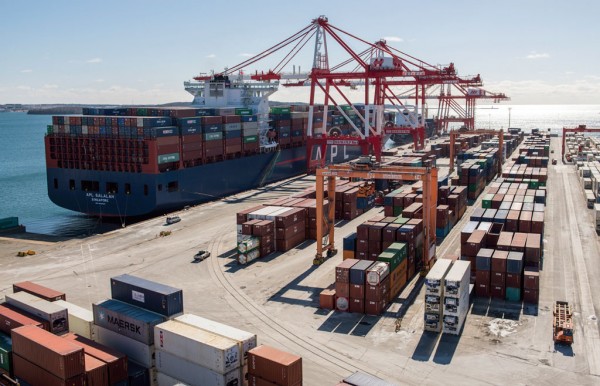Following a prolonged period of stagnation, the Deepwater Port of Halifax is on the comeback trail, with the resurgence sparked by 10,000 TEU ships now regularly calling on North America’s East Coast plus the arrival of new services. For Karen Oldfield, at the helm of the Nova Scotia port since 2002, it’s definitely a question of perseverance being rewarded after being big-ship ready for several years.
Last year, containerized cargo volume hit a record 560,000 TEU, up 16% over 2016. The previous peak was 550,462 TEU in 2005.
Among regular customers are Hapag-Lloyd, Zim, ACL, APL, Maersk, OOCL, Evergreen, CMA CGM, Eimskip and Yang Ming.

According to Oldfield, the current growth cycle “is a reflection of the hard work of key port partners, including terminal operators, ocean carriers, rail provider CN, labor, marine pilots and tug operators. This past year also saw the arrival of Ultra container vessels over 10,000 TEU to our port. All of this combined provides a very strong foundation on which to build.”
Kim Holtermand, CEO of Halterm, has indicated that the South End facility, which has no air draft or other impediments, can accommodate still larger container vessels, in the 14,000-TEU plus category.
In this regard, there is speculation that the port’s long-term blueprint yet to be completed will recommend an extension of the Halterm berth to handle two mega container ships simultaneously.
Commenting on recent developments to the American Journal of Transportation, Lane Ferguson, communications manager of the Halifax Port Authority, noted: “Global shipping routes are being redrawn to accommodate the general shift toward larger vessels which is now in full acceleration thanks to four factors: the expanded Panama Canal; the raising of the Bayonne Bridge in New York, the additional lane of the Suez Canal which opened in 2015, and the formation of three strategic ocean carrier shipping alliances, two of which are calling at the Port of Halifax – Ocean Alliance, and THE Alliance.
“While we don’t break out detailed information about specific trade routes,” he continued, “I can say that reaching into manufacturing centers and areas of high population is important as those areas present opportunities for cargo growth and business development. We see the potential for growth along South East Asian routes, European routes, the Caribbean and New England States, as well as central markets, and we will continue to work with our partners to grow those markets.”

Nova Scotia Challengers Still on Sidelines
Meanwhile, continuing to be in virtual limbo (but not totally dead) are two major container terminal projects in Nova Scotia, which both need to overcome railway connection and other issues.
Several years ago, Melford International Terminal announced plans to build a terminal at the Strait of Canso, with initial capacity of 500,000 TEUs and expanding to 2 million TEUs in a final phase. There has been little progress in terms of financing and shipper commitments.
Somewhat more advanced, but still not formally launched, is the nearly one billion dollar Novaporte project by Sydney Harbour Investment Partnership, with a capacity of one million TEUs in the first phase. Here, too, the goal is to transload containers from large ships onto smaller feeder services to the East Coast and up the St. Lawrence River. Ports America has signed on to operate the terminal, but there has not yet been a formal commitment from beneficial cargo owners or shipping line.





